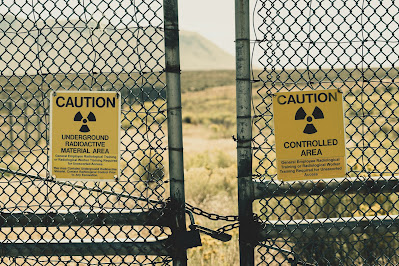The efficacy of global climate agreements is crucial in dealing with the pressing and intricate issue of climate change in the 21st century. It poses significant risks to the environment, human well-being, food security, economic progress, and global peace and stability. To confront this challenge, nations have engaged in negotiations to establish international agreements aimed at reducing greenhouse gas emissions and adapting to the impacts of climate change. However, it is important to assess the effectiveness of these agreements in achieving their objectives and identify the key factors that influence their success or failure.
The Kyoto Protocol: A top-down approach
The first major international agreement on climate change was the Kyoto Protocol, adopted in 1997 under the United Nations Framework Convention on Climate Change (UNFCCC). This protocol mandated 37 industrialized countries and the European Union to meet legally binding targets, reducing their emissions by an average of 5 percent below 1990 levels during the period 2008-2012. It also introduced mechanisms like emissions trading, joint implementation, and the clean development mechanism, enabling countries to fulfill their targets by investing in emission reduction projects in other nations.
The Kyoto Protocol was considered a significant accomplishment at the time, but it encountered several challenges and criticisms. Firstly, it did not include major emitters like the United States, which withdrew from the protocol in 2001, and exempted developing countries like China and India from emission reduction obligations. Secondly, it lacked adequate incentives or support for developing countries to engage in mitigation and adaptation measures. Thirdly, it did not address crucial drivers of emissions such as deforestation and land use changes. Lastly, it failed to ensure compliance and enforcement of the targets, with some countries not meeting their commitments or withdrawing from the protocol.
According to Olivier et al.'s study in 2017, the Kyoto Protocol had a modest impact on global emissions, reducing them by approximately 1.3 percent compared to a scenario without the protocol. However, this reduction was mostly offset by the increased emissions from non-participating countries, particularly China and India. The study also found that the protocol positively influenced technological innovation and policy development in some countries, but it did not establish a robust global carbon market or foster strong international cooperation.
The Paris Agreement: A bottom-up approach
The second major international agreement on climate change was the Paris Agreement, adopted in 2015 under the UNFCCC. Its objective is to significantly decrease global greenhouse gas emissions to limit the global temperature increase to 2 degrees Celsius above preindustrial levels, with an effort to keep it within 1.5 degrees Celsius. Additionally, the agreement aims to enhance adaptation to the adverse impacts of climate change and mobilize financial resources and support for developing countries.
The Paris Agreement represents a shift from the top-down approach of the Kyoto Protocol to a bottom-up approach, enabling countries to determine their own nationally determined contributions (NDCs) to mitigation and adaptation based on their specific circumstances and capabilities. The agreement also includes a global stocktake every five years to assess collective progress and ambition, as well as a transparency framework to monitor and report on actions and support.
The Paris Agreement has received widespread acclaim for its inclusive, flexible, and ambitious nature, being ratified by 197 parties, including major emitters. However, it also faces challenges and uncertainties. Firstly, it relies on voluntary and self-defined commitments that may not be sufficient or aligned with the agreement's long-term goal. Secondly, it lacks adequate mechanisms or resources to ensure compliance and accountability. Thirdly, it does not address contentious issues like loss and damage, carbon markets, and differentiation between developed and developing countries. Lastly, it is susceptible to political changes and uncertainties, exemplified by the withdrawal of the United States during President Donald Trump's tenure.
According to Rogelj et al.'s study in 2016, the Paris Agreement has greater potential for effectiveness compared to the Kyoto Protocol, potentially reducing global emissions by around 4 percent when compared to a scenario without the agreement. However, this potential relies on factors such as the level of ambition and implementation of the NDCs, international cooperation and support, and the extent of technological innovation and behavioral change. The study also cautions that even with full implementation of current NDCs by all parties, global warming is likely to exceed 2 degrees Celsius by 2100.
Conclusion
International climate agreements serve as crucial instruments in tackling the global challenge of climate change. However, they alone are not sufficient or flawless solutions. They need to be complemented by national and subnational policies and actions that reflect local realities and priorities. Moreover, they require support from public awareness and engagement, as well as scientific research and innovation. Ultimately, the effectiveness of international climate agreements relies on the political will and collective action of all countries and stakeholders.











Comments
Post a Comment